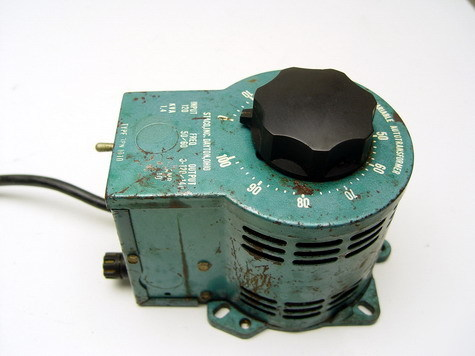Years ago, I made money with snowmen decorations cut from foam with a hot-wire cutter.
Being that I was a teen and fearless… a transformer with a rheostat didn’t cause any problems. Duh.
Flash forward to now.- Today I used my 0-15 V at 50 Watt hobby transformer to heat old nichrome wire from a dryer.
I could dial in temperatures that cut a variety of foamed plastic neatly without too much stink or deformation. It was a short wire and an short test.
Googling found the folks in RC aircraft have been doing advanced hot-wire cutting of polypropelene foam airfoils for years. I think that is what she is cutting,
The most advanced process recommendations are cutting foam with stainless steel fishing leader wire and a 0-30v 3A lab power supply.
There are lots of 0-30v 3A kits. on eBay.
Should we suggest a cheap kit we build <$10 -
https://www.ebay.com/itm/0-30V-2mA-3A-Adjustable-DC-Regulated-Power-Supply-DIY-Kit-Short-w-Protection-TM/201393592805?epid=11004025574&hash=item2ee3fe59e5:g:e3AAAOSw-vlVkK3q
TANSTAFL? Aren’t there somethings like a box and transformer that are missing from the kit?
or a cheapo power supply like this? There must be 50 similar on eBay.
https://www.ebay.com/itm/Adjustable-Digital-Regulated-DC-Power-Supply-30V-60V-3A-5A-10A-90W-180W-300W-Lab/132392041508?hash=item1ed32e3c24:m:mMOskDN1WUmV0wLKgwDT01A
A power supply and a couple of wire holders could greatly speed up the creation of forms. I’ll bet that a total output race between hot-wire and laser cutting would lean toward the low tech.
Yeah - You can buy hot wire cutters on eBay, but the RC guys have a great point, which is. You cannot regulate the heat on the wire with the store bought kits.
You can also build something with a 24V transformer and a light dimmer, but that has limits and added costs too.
Plus if a really good Power Supply is around $40 the why not save the work of building something. I’m lazy I guess.
Anyone have an opinion to contribute?
Dave


